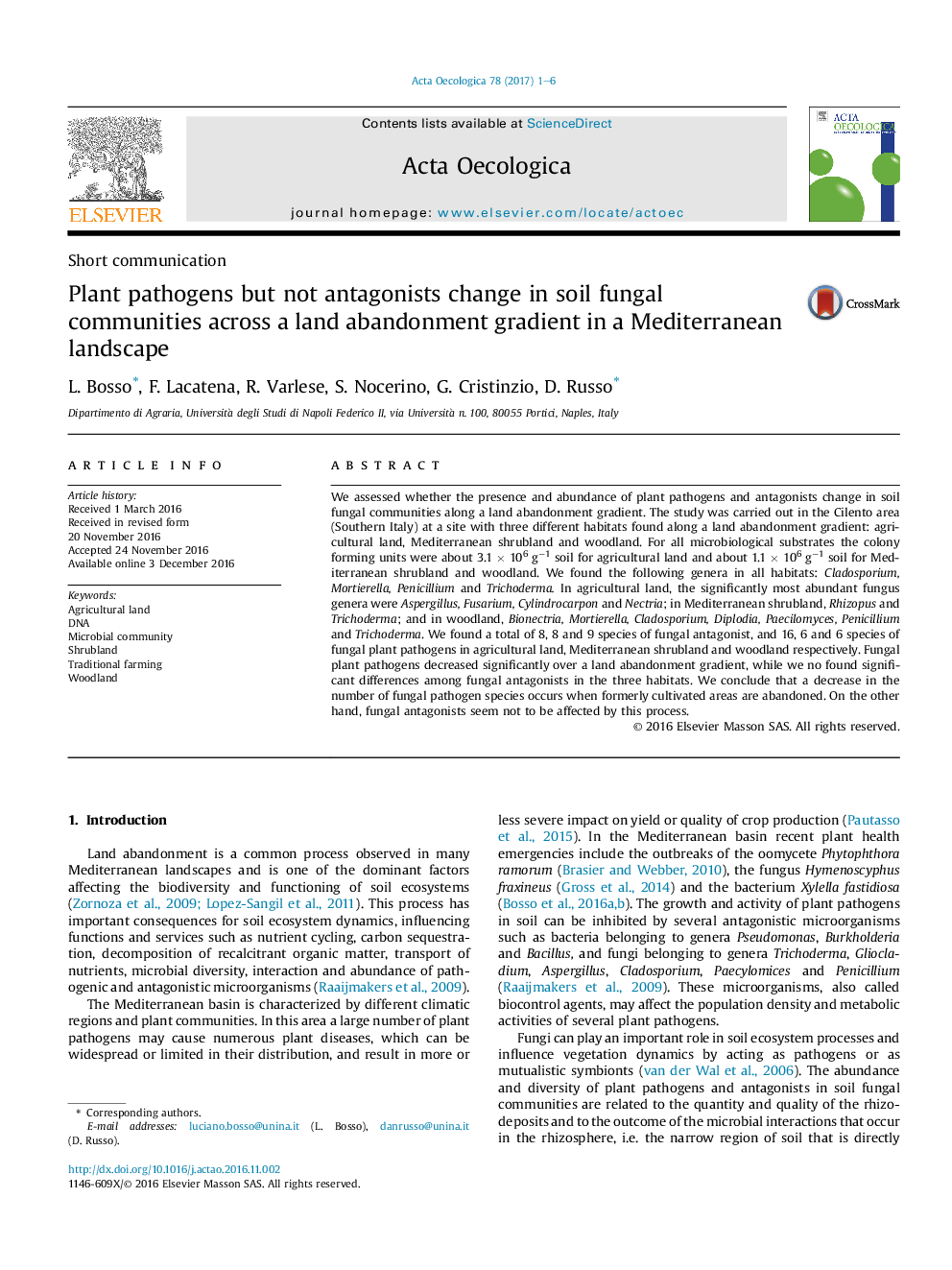| Article ID | Journal | Published Year | Pages | File Type |
|---|---|---|---|---|
| 5742534 | Acta Oecologica | 2017 | 6 Pages |
â¢We found that EC, TOC, TN and C:N increased over a land abandonment gradient.â¢We no found differences of pH and NO3â-N over a land abandonment gradient.â¢We found that fungal plant pathogens decreased over a land abandonment gradient.â¢We no found differences of fungal antagonists over a land abandonment gradient.
We assessed whether the presence and abundance of plant pathogens and antagonists change in soil fungal communities along a land abandonment gradient. The study was carried out in the Cilento area (Southern Italy) at a site with three different habitats found along a land abandonment gradient: agricultural land, Mediterranean shrubland and woodland. For all microbiological substrates the colony forming units were about 3.1Â ÃÂ 106Â gâ1 soil for agricultural land and about 1.1Â ÃÂ 106Â gâ1 soil for Mediterranean shrubland and woodland. We found the following genera in all habitats: Cladosporium, Mortierella, Penicillium and Trichoderma. In agricultural land, the significantly most abundant fungus genera were Aspergillus, Fusarium, Cylindrocarpon and Nectria; in Mediterranean shrubland, Rhizopus and Trichoderma; and in woodland, Bionectria, Mortierella, Cladosporium, Diplodia, Paecilomyces, Penicillium and Trichoderma. We found a total of 8, 8 and 9 species of fungal antagonist, and 16, 6 and 6 species of fungal plant pathogens in agricultural land, Mediterranean shrubland and woodland respectively. Fungal plant pathogens decreased significantly over a land abandonment gradient, while we no found significant differences among fungal antagonists in the three habitats. We conclude that a decrease in the number of fungal pathogen species occurs when formerly cultivated areas are abandoned. On the other hand, fungal antagonists seem not to be affected by this process.
